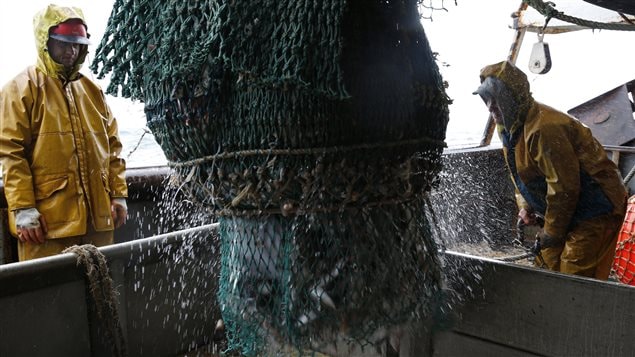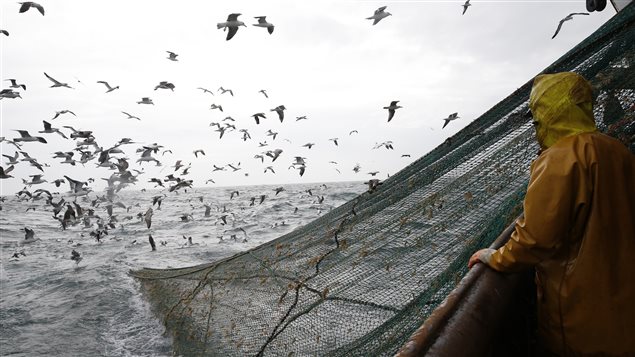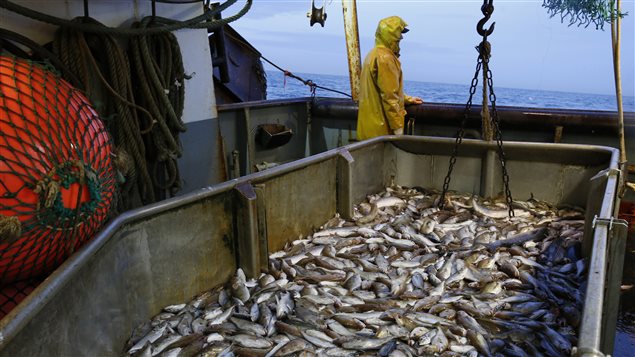Less than a quarter of Canada’s fish stocks are considered healthy and the status of almost half is unknown, according to a new report released today.
The report by Oceana Canada, a charity dedicated to protection of the country’s three oceans, also outlines the extent to which it says “overfishing and decades of poor management practices have severely depleted our fish populations.”
“As Canadians, we perceive ourselves to be good stewards of the environment. But when it comes to our oceans, we have failed to live up to that ideal,” said in a statement Julia Baum of University of Victoria and lead author of the scientific report.
Canada needs to get serious about ocean conservation, said Josh Laughren, Oceana Canada executive director, in an interview with RCI. Science-based management and recovery of Canadian fisheries must become a political priority, he said.
“We don’t know very much oftentimes,” Laughren said. “Canada does a worse job than most other countries, almost any other of the developed countries, in making available information on the status of our fish.”
(click to listen the full interview with Josh Laughren)
ListenFlawed legal framework

One of the reasons for this lack of knowledge has to do with Canada’s legal framework governing the fisheries. There is no legal basis to require the government to report on the status of fish stocks.
Unlike the United States where the Congress gets quarterly reports on fish stocks, Canada’s Fisheries Act doesn’t require reporting on the status of stocks and doesn’t require rebuilding of stocks, Laughren said.
Without that legal framework there are also inconsistencies on how the Department of Fisheries and Oceans (DFO) collects information on each of Canada’s three coasts, he said.
Mélanie Mellon, a spokesperson for the DFO, said work is underway to make information on fishery stocks more accessible to Canadians. It will be available on the Fisheries and Oceans website by the end of 2016, she said.
“We also have several initiatives underway to increase transparency on fishery management decisions and provide more information on how decisions are made,” Mellon wrote in an email in response to RCI questions.
The third reason is cultural, Laughren said.
“The department really is designed to serve its clients, that’s the word they use in the fishing industry,” Laughren said. “So the whole apparatus is designed to give the fishing industry what they need in order to fish their stocks over the next year.”
Eggs in one basket
The report says since 1970 the biomass of Canadian marine stocks has declined by 55 per cent.
Yet Canada is making more money from our seafood industry than ever before. In 2015, Canada’s Atlantic, Arctic and Pacific fisheries were worth about $6 billion and directly employed 46,000 people, while also providing 32,000 indirect jobs.
But most of the income from the fisheries this is based primarily on a small number of shellfish stocks, mainly lobster, crab, shrimp and scallops, Laughren said.
This lack of diversity makes coastal communities and the Canadian seafood industry vulnerable, as communities could have little to fall back on if these stocks decline, the report says.
The collapse of the cod industry in 1992 led to tens of thousands of people out of work and financial losses of $4 billion.
No rebuilding plan

Nearly twenty-five years after the collapse, only one stock has a rebuilding plan, Laughren said.
“What we found is that although we stopped the decline of those fisheries in the 1990s, we didn’t allow for the recovery,” Laughren said. “So what we’re seeing with a lot of stocks unhealthy is still the hangover of that overfishing.”
Unlike some other countries Canada hasn’t invested in the recovery of those stocks, he said.
Mellon said the DFO has just announced a review of the recent changes to the Fisheries Act with respect to fish habitat.
“While the review is underway, the government will continue to ensure that fish and fish habitat are protected,” Mellon said. “We will implement new processes to monitor development projects and for reporting back to the public on how fish and fish habitat are being protected.”
There are many success stories that prove that with the right management and conservation efforts depleted fish stocks rebound, Laughren said.
“Fish don’t breed like rabbits, rabbits breed like fish,” he said.
Fish lay millions of eggs and often the recovery can happen very quickly when the right conditions are put in place, Laughren said.
A good news story
The recovery Atlantic halibut is a case in point.
Halibut was in very rough shape in 1990s like cod and other ground fish, Laughren said.
But when Canadian authorities put in place the moratorium on cod fishing following its dramatic collapse in early 1990s, they also limited fishing on halibut, Laughren said.
“When that happened halibut recovered,” he said. “So this is a large apex predator, a slow-growing fish, and it recovered in 15 years or so and now it looks like at historical levels.”
That means the amount of halibut that are being fished has gone up too.
“The population has recovered, it’s part of a healthier ecosystem, and communities are getting benefits from that too,” Laughren said. “We know that when you limit the mortality, when you limit the amount of fish that you’re catching, fish do recover.”
The report makes four recommendations to restore the health of Canadian fish stocks:
- Greater transparency, more regular reporting on the status of fish stocks
- Reinvestment in science
- Put in place fish stock rebuilding plans
- Reform the Fisheries Act







For reasons beyond our control, and for an undetermined period of time, our comment section is now closed. However, our social networks remain open to your contributions.